In the ever-evolving world of art, staying ahead of the curve is crucial. Let’s explore some of the art market insights that are shaping the creative landscape. These are helping artists connect with their audience in innovative ways.
Insight #1: Embracing NFTs (Non-Fungible Tokens)
NFTs took the art world by storm in recent years, and they continue to be a hot topic in 2023. These tokens represent ownership of unique digital or physical assets, including artworks. Artists can leverage NFTs to reach a global audience and secure more control over their work’s resale value. It’s a trend that’s transforming the way we perceive and trade art. Here are the top art market trends for 2023 – 2024:
Pros:
- Global Reach: NFTs allow artists to reach a worldwide audience, potentially increasing their visibility and market.
- Ownership Control: Artists can set terms for royalties on resales, ensuring ongoing revenue.
- Innovative Expression: NFTs open doors to new forms of digital and crypto art, pushing creative boundaries.
Cons:
- Technical Complexity: NFTs involve blockchain technology, which can be complex and intimidating for some artists.
- Environmental Concerns: The energy consumption of blockchain networks is a concern.
- Market Volatility: The NFT market can be highly speculative and volatile, leading to uncertain pricing.
Insight #2: Virtual Exhibitions and Galleries
The pandemic accelerated the trend of virtual exhibitions and online galleries – this art market trend is here to stay. Artists are now able to showcase their work to a worldwide audience without the limitations of a physical location. Immersive digital experiences and augmented reality (AR) exhibitions are pushing the boundaries of how we interact with art.
Pros:
- Global Accessibility: Virtual exhibitions remove geographical limitations, making art accessible to a global audience.
- Cost Efficiency: Hosting virtual exhibitions can be more cost-effective than physical ones.
- Immersive Experiences: AR and VR exhibitions offer unique and immersive art experiences.
Cons:
- Limited Tangibility: Virtual exhibitions lack the tactile experience of physical art.
- Technical Barriers: Some viewers may struggle with the technology required for virtual experiences.
- Networking Challenges: Building connections with fellow artists and collectors can be more challenging in a virtual setting.
Insight #3: Influencer Collaborations
Collaborating with social media influencers and art enthusiasts can be a powerful way to expand your reach. Influencers can introduce your art to their engaged followers, helping you gain visibility in a crowded digital landscape. This is an art market trend you don’t want to miss out on!
Pros:
- Expanded Reach: Collaborating with influencers can introduce your art to a wider and engaged audience.
- Credibility Boost: An influencer’s endorsement can lend credibility to your work.
- Diverse Promotion: Influencers from various niches can help target specific demographics.
Cons:
- Authenticity Concerns: Inauthentic collaborations can harm your reputation.
- Costs: Some influencers may charge high fees for collaborations.
- Limited Control: You may have limited control over how influencers present your art.
Insight #4: Sustainable Art Practices
With growing environmental concerns, many artists are adopting sustainable practices and using their art as a platform to address pressing issues. This not only resonates with eco-conscious buyers but also aligns with the broader societal shift toward sustainability. This art market trend will increase in coming years. Want to learn more about this, learn about how collage art embraces sustainability…
Pros:
- Appealing to Values: Sustainable art appeals to eco-conscious buyers and aligns with societal values.
- Unique Message: Artists can use their work to convey important messages about environmental issues.
- Marketing Angle: Sustainability can be a compelling angle for marketing your art.
Cons:
- Artistic Limitations: Sustainable materials and practices may limit artistic choices.
- Niche Audience: Sustainable art may not resonate with all types of collectors.
- Challenges in Sourcing: Sourcing eco-friendly materials can be more challenging and costly.
#5: Personal Branding and Storytelling
In a world inundated with content, artists are focusing on authentic personal branding and storytelling. Sharing your journey, creative process, and the stories behind your art can establish a deeper connection with your audience. Use this art market insight to increase your online engagement.
Pros:
- Connection Building: Sharing your story creates a deeper connection with your audience.
- Authenticity: Personal branding promotes authenticity and uniqueness.
- Memorability: People tend to remember stories, making your brand more memorable.
Cons:
- Oversaturation: Many artists use personal branding, making it essential to stand out.
- Time-Consuming: Building a personal brand and sharing stories can be time-intensive.
- Privacy Concerns: Sharing personal details may raise privacy concerns.
Insight #6: Art on Social Media Platforms
Social media remains a powerful tool for artists to showcase their work. Platforms like Instagram, Pinterest, and TikTok are evolving to offer more opportunities for artists to share their creativity. Using features like reels, stories, and shoppable posts can help artists engage with their audience effectively. If you aren’t already doing this art market trend, you will fall behind.
Pros:
- Wide Reach: Social media offers a vast, diverse, and potentially global audience.
- Engagement Opportunities: Features like stories and reels enhance engagement.
- Direct Interaction: Artists can directly connect with their audience and gather feedback.
Cons:
- Algorithm Changes: Social media platforms’ algorithms can impact your reach.
- Content Overload: The sheer volume of content can make it challenging to stand out.
- Time-Consuming: Maintaining a strong social media presence requires consistent effort.
Insight #7: Art Subscription Services
Art subscription services are gaining popularity, allowing collectors to discover new artists and artworks regularly. Artists can leverage these platforms to reach a steady stream of potential buyers and build a loyal following. This art market trend can be hard to implement into a sales strategy – do more research and read these blogs:
- 11 Ideas for an Arts and Crafts Subscription Box Business
- How to Start a Subscription Box Business in 8 Simple Steps
- Subscription and Membership Businesses: A How-To Guide for Indie Artists
Pros:
- Steady Income: Artists can enjoy a predictable income stream as subscribers pay regularly.
- Exposure: Art subscription platforms often promote artists to a broader audience.
- Collector Engagement: Subscribers often develop a deeper connection with artists and their work over time.
- Diverse Clientele: Artists can attract a diverse range of collectors with varying tastes.
Cons:
- Subscription Fatigue: Some subscribers may lose interest or cancel after a short time.
- Competition: The growing number of subscription services can lead to fierce competition.
- Ongoing Commitment: Artists must consistently produce new work to satisfy subscribers.
- Pricing Challenges: Finding the right pricing structure can be challenging.
Insight #8: Collaborative Art Projects
Collaboration among artists or with other industries like fashion or technology can create unique and engaging art experiences. These projects often garner attention and intrigue from diverse audiences.
Pros:
- Innovative Ideas: Collaborations can lead to unique and innovative art projects.
- Expanded Network: Artists can tap into each other’s networks, reaching new audiences.
- Skill Sharing: Collaborators can learn from each other, improving their craft.
- Shared Resources: Collaborators can pool resources, reducing the financial burden.
Cons:
- Creative Differences: Conflicting artistic visions can lead to challenges during collaboration.
- Logistical Issues: Coordinating with multiple artists can be complex and time-consuming.
- Intellectual Property: Ownership and credit for collaborative work may require careful negotiation.
- Project Completion: Some projects may remain unfinished due to difficulties in collaboration.
Insight #9: Art SEO and Data Analytics
Utilizing SEO strategies to optimize your online presence and data analytics to understand your audience’s behavior is becoming increasingly important. These insights can guide your marketing efforts and help you connect with your target demographic.
Art Trend – Pros:
- Improved Visibility: Effective SEO can increase an artist’s online visibility.
- Targeted Marketing: Data analytics provide insights to tailor marketing strategies.
- Audience Understanding: Analytics help artists better understand their audience’s preferences.
- Measurable Results: Data allows for tracking the effectiveness of marketing efforts.
Art Trend – Cons:
- Learning Curve: Implementing SEO and data analytics may require a learning curve.
- Time-Consuming: Managing SEO and data analysis can be time-intensive.
- Technical Challenges: Artists may need to rely on experts for more advanced analytics.
- Privacy Concerns: Collecting and analysing data must be done ethically and within privacy regulations.

